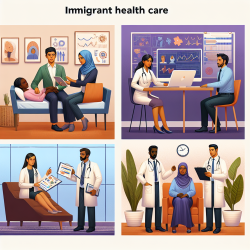Introduction
The intersection of technology and education presents unique opportunities to enhance learning outcomes, especially in the realm of online therapy. The research article "The Population Ecology of Technology: An Empirical Study of US Biotechnology Patents from 1976 to 2003" offers valuable insights into how technological ecosystems evolve and grow. By understanding these dynamics, practitioners in online therapy can refine their approaches, leading to better outcomes for children.
Understanding Technological Niches
The concept of a technological niche, as explored in the study, is crucial for understanding how different technological components interact within a system. A niche refers to the relational context of a technological component, which can be viewed as a population of related inventions. This framework can be applied to online therapy platforms, where different technological tools and resources interact to create a comprehensive therapy environment.
Key Findings and Their Implications
- Component Density: The study found that a higher density of technological components within a niche can lead to increased growth. For online therapy, this suggests that integrating a diverse range of tools and resources can enhance the platform's effectiveness.
- System Density: While the study did not find a significant positive effect of system density on component growth, the concept highlights the importance of considering the broader technological ecosystem. Online therapy providers should be aware of how their tools fit within the larger educational technology landscape.
- Component Diversity: Diversity within a technological niche is positively associated with growth. This underscores the importance of offering a variety of therapy tools to cater to different learning needs and styles, ultimately improving educational outcomes.
- Component Status: Surprisingly, the study found a negative effect of component status on growth, suggesting that high-status components might not always lead to increased innovation. For online therapy, this indicates that newer, less established tools could offer innovative solutions that better meet the needs of children.
- Local vs. Global Crowding: Local crowding negatively impacts growth, while global crowding has the potential for positive spillovers. This finding suggests that online therapy platforms should focus on integrating tools that are unique and not overly saturated within the market.
Encouraging Further Research
The findings from this study provide a foundation for further exploration into how technological ecosystems can be optimized for educational purposes. Practitioners are encouraged to conduct their own research into how different tools and resources interact within their specific contexts, using data-driven approaches to inform their decisions.
Conclusion
By applying the principles of population ecology to online therapy, practitioners can create more dynamic and effective learning environments. This approach not only enhances the quality of therapy but also contributes to better educational outcomes for children. As we continue to explore the potential of technology in education, ongoing research and innovation will be key to unlocking new possibilities.
To read the original research paper, please follow this link: The Population Ecology of Technology: An Empirical Study of US Biotechnology Patents from 1976 to 2003.










